Schedule
Tomato Crop Schedule
| Product Name | Fertilizers | ||||||
|---|---|---|---|---|---|---|---|
| Poornima Kit | NPK Grow Caps |
Humigrow Nano Powder |
Cropforce Nano Powder |
Alp | Sonha-Bihan | ||
| Humic Acid | Seaweed Extract | Chelated Multi-micronutrient |
PGP/PGR | ||||
| Land Reparation | week -2 | ||||||
| Soil Treatment | week -1 | ||||||
| Before Seed Sowing | week 0 | ||||||
| Germination | week 1 | ||||||
| Vegetative Growth | week 2 | 1 Kit | |||||
| week 3 | |||||||
| week 4 | |||||||
| week 5 | |||||||
| week 6 | 2 Caps | 120gm | |||||
| week 7 | |||||||
| week 8 | |||||||
| week 9 | 1 Kit | ||||||
| Flowering/ Fruiting/ Harvesting | week 10 | 250gm | 250gm | ||||
| week 11 | |||||||
| week 12 | |||||||
| week 13 | 2 Caps | 120gm | |||||
| week 14 | |||||||
| week 15 | |||||||
| week 16 | |||||||
| week 17 | 1 Kit | ||||||
| week 18 | 250gm | 250gm | |||||
| week 19 | |||||||
| week 20 | |||||||
| week 21 | |||||||
| week 22 | |||||||
| week 23 | |||||||
| week 24 | |||||||
| Further will be repeated deepnding on the crop health, and weather conditions | |||||||
| Total Quantity | 3 Kit | 4 Caps | 240gm | 500gm | 500gm | ||
| Broadcast | |
| Top Dressing | |
| Basal Dressing | |
| Soil Application | |
| Spray | |
| * | Optional |
NOTE: For the first year donot immidietaly substitute 100% chemical fertilizer with the SIESTO GREEN products, as the soil is used to chemical fertilizer, it may affect the output. So the best way to substitute is by reducing 50% of chemical input in the first year, 25% the following 2nd year, & then another 10% by the 3rd year. After the 3rd year use synthetic fertilizer / inorganic fertilizer if their is a requirement depending on the soil health.
CROP SCHEDULE FOR TOMATO
Sr. No.
Treatment / Application
Product
Dose /Acre
APPLICATION
Management
1
Vegetative – Dissolve in 20 to 200 ltr. of water as required for 1 acre of land and apply through Drip Irrigation or drench.
POORNIMA KIT
1 KIT
Apply it in Week 2, 9, and 17.
It is a balanced form of nutrients that includes NPK, Zinc, Cropforce NP, Humigrow NP, and Mycorrhiza NP
2
Vegetative – Mix all with the required amount of water and apply through drip irrigation, flood irrigation, or drenching as per farmer’s availability.
NPK + Humigrow
2 caps + 120gm
Apply it in Week 6 and 13.
It is a balanced form of Nutrition that includes NPK with Humic
3
Flowering – Mix both in 20 – 200 liters of water as per requirement and spray it on the plants.
ALP + Sonhabihan
250gm + 250gm/200 lit. of water
Apply it in Week 10 and 18.
It is a Micronutrient and PGP that helps in Growth, Fruit set, and the quality of the produce.
PEST ATTACKS, BACTERIAL, OR FUNGAL MANAGEMENT
PEST / BACTERIAL / FUNGAL
IDENTIFICATION IN CROP
SYMPTOMS
SUGGESTED PRODUCT
Early Blight
 Dark spots with rings on lower leaves.
Indofa + Bacillus
Fusarium Wilt
Dark spots with rings on lower leaves.
Indofa + Bacillus
Fusarium Wilt
 The entire plant wilts during the day and leaves yellow on one side plant.
Indofa + Lifeline + Bacillus
Powdery Mildew
The entire plant wilts during the day and leaves yellow on one side plant.
Indofa + Lifeline + Bacillus
Powdery Mildew
 Light green or yellow spots on leaves turn dusty white.
Life-line + Indofa + BT
Anthracnose
Light green or yellow spots on leaves turn dusty white.
Life-line + Indofa + BT
Anthracnose
 Small, sunken, water-soaked spots on ripening fruit.
Indofa
Septoria Leaf Spot
Small, sunken, water-soaked spots on ripening fruit.
Indofa
Septoria Leaf Spot
 Small, Brown, round spots on leaves.
Indofa
Botrytis
Small, Brown, round spots on leaves.
Indofa
Botrytis
 Gray-brown mold on leaves, stems, or fruit.
Indofa + Bacillus
Damping Off
Gray-brown mold on leaves, stems, or fruit.
Indofa + Bacillus
Damping Off
 This is a most common seedling disease that affects the young seedlings at the base of the stem, near the soil line.
Indofa + Bacillus
Serpentine Leaf Miner
This is a most common seedling disease that affects the young seedlings at the base of the stem, near the soil line.
Indofa + Bacillus
Serpentine Leaf Miner
 It is a pale yellowish fly, measuring 1.5 mm in length. The female fly punctures the upper surface of the leaf to lay eggs singly. The total life cycle takes 3 weeks.
Lifeline + Traps + Meta + BT
Gram pod borer
It is a pale yellowish fly, measuring 1.5 mm in length. The female fly punctures the upper surface of the leaf to lay eggs singly. The total life cycle takes 3 weeks.
Lifeline + Traps + Meta + BT
Gram pod borer
 Young larva feeds on the leaves for some time and then attacks fruits. Internal tissues are eaten severely and completely hollowed out.
Meta + BT + Lifeline / Traps
Tobacco Caterpillar
Young larva feeds on the leaves for some time and then attacks fruits. Internal tissues are eaten severely and completely hollowed out.
Meta + BT + Lifeline / Traps
Tobacco Caterpillar
 In the early stages, the caterpillars are gregarious and scrape the chlorophyll content of leaf lamina giving it a papery white appearance.
Lifeline + Traps + Meta + BT
Whitefly
In the early stages, the caterpillars are gregarious and scrape the chlorophyll content of leaf lamina giving it a papery white appearance.
Lifeline + Traps + Meta + BT
Whitefly
 Chlorotic spots, Yellowing, Downward curling, and drying of leaves, Vector of tomato leaf curl disease.
Lifeline + Traps + Meta + BT
Spider Mites
Chlorotic spots, Yellowing, Downward curling, and drying of leaves, Vector of tomato leaf curl disease.
Lifeline + Traps + Meta + BT
Spider Mites
 Affected leaves become reddish brown and bronzy, Leaves wither and dry, and flower and fruit formation is affected.
Lifeline + Traps + Meta + BT
Root-knot nematode
Affected leaves become reddish brown and bronzy, Leaves wither and dry, and flower and fruit formation is affected.
Lifeline + Traps + Meta + BT
Root-knot nematode
 The formation of galls on the host root system is the primary symptom.
Meta + BT + Pacliq
Aphids
The formation of galls on the host root system is the primary symptom.
Meta + BT + Pacliq
Aphids
 Stunted Growth, Curled or yellow leaves, and Sticky honeydews.
Lifeline + Traps + Meta + BT
Thrips
Stunted Growth, Curled or yellow leaves, and Sticky honeydews.
Lifeline + Traps + Meta + BT
Thrips
 The thrips can cause tomato spotted wilt virus.
Lifeline + Traps + Meta + BT
The thrips can cause tomato spotted wilt virus.
Lifeline + Traps + Meta + BT
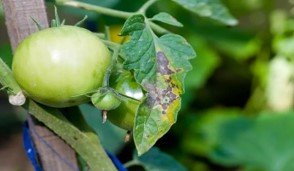 Dark spots with rings on lower leaves.
Indofa + Bacillus
Fusarium Wilt
Dark spots with rings on lower leaves.
Indofa + Bacillus
Fusarium Wilt
 The entire plant wilts during the day and leaves yellow on one side plant.
Indofa + Lifeline + Bacillus
Powdery Mildew
The entire plant wilts during the day and leaves yellow on one side plant.
Indofa + Lifeline + Bacillus
Powdery Mildew
 Light green or yellow spots on leaves turn dusty white.
Life-line + Indofa + BT
Anthracnose
Light green or yellow spots on leaves turn dusty white.
Life-line + Indofa + BT
Anthracnose
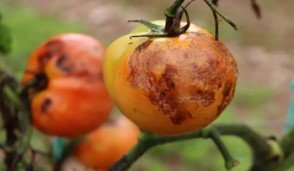 Small, sunken, water-soaked spots on ripening fruit.
Indofa
Septoria Leaf Spot
Small, sunken, water-soaked spots on ripening fruit.
Indofa
Septoria Leaf Spot
 Small, Brown, round spots on leaves.
Indofa
Botrytis
Small, Brown, round spots on leaves.
Indofa
Botrytis
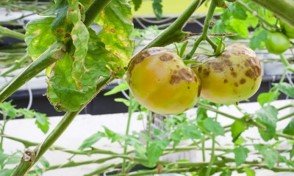 Gray-brown mold on leaves, stems, or fruit.
Indofa + Bacillus
Damping Off
Gray-brown mold on leaves, stems, or fruit.
Indofa + Bacillus
Damping Off
 This is a most common seedling disease that affects the young seedlings at the base of the stem, near the soil line.
Indofa + Bacillus
Serpentine Leaf Miner
This is a most common seedling disease that affects the young seedlings at the base of the stem, near the soil line.
Indofa + Bacillus
Serpentine Leaf Miner
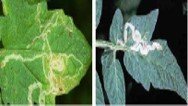 It is a pale yellowish fly, measuring 1.5 mm in length. The female fly punctures the upper surface of the leaf to lay eggs singly. The total life cycle takes 3 weeks.
Lifeline + Traps + Meta + BT
Gram pod borer
It is a pale yellowish fly, measuring 1.5 mm in length. The female fly punctures the upper surface of the leaf to lay eggs singly. The total life cycle takes 3 weeks.
Lifeline + Traps + Meta + BT
Gram pod borer
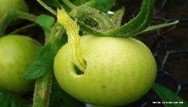 Young larva feeds on the leaves for some time and then attacks fruits. Internal tissues are eaten severely and completely hollowed out.
Meta + BT + Lifeline / Traps
Tobacco Caterpillar
Young larva feeds on the leaves for some time and then attacks fruits. Internal tissues are eaten severely and completely hollowed out.
Meta + BT + Lifeline / Traps
Tobacco Caterpillar
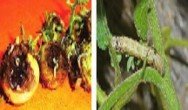 In the early stages, the caterpillars are gregarious and scrape the chlorophyll content of leaf lamina giving it a papery white appearance.
Lifeline + Traps + Meta + BT
Whitefly
In the early stages, the caterpillars are gregarious and scrape the chlorophyll content of leaf lamina giving it a papery white appearance.
Lifeline + Traps + Meta + BT
Whitefly
 Chlorotic spots, Yellowing, Downward curling, and drying of leaves, Vector of tomato leaf curl disease.
Lifeline + Traps + Meta + BT
Spider Mites
Chlorotic spots, Yellowing, Downward curling, and drying of leaves, Vector of tomato leaf curl disease.
Lifeline + Traps + Meta + BT
Spider Mites
 Affected leaves become reddish brown and bronzy, Leaves wither and dry, and flower and fruit formation is affected.
Lifeline + Traps + Meta + BT
Root-knot nematode
Affected leaves become reddish brown and bronzy, Leaves wither and dry, and flower and fruit formation is affected.
Lifeline + Traps + Meta + BT
Root-knot nematode
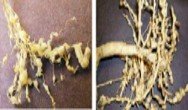 The formation of galls on the host root system is the primary symptom.
Meta + BT + Pacliq
Aphids
The formation of galls on the host root system is the primary symptom.
Meta + BT + Pacliq
Aphids
 Stunted Growth, Curled or yellow leaves, and Sticky honeydews.
Lifeline + Traps + Meta + BT
Thrips
Stunted Growth, Curled or yellow leaves, and Sticky honeydews.
Lifeline + Traps + Meta + BT
Thrips
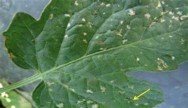 The thrips can cause tomato spotted wilt virus.
Lifeline + Traps + Meta + BT
The thrips can cause tomato spotted wilt virus.
Lifeline + Traps + Meta + BT
NUTRITION DEFICIENCY
NUTRIENT
IDENTIFICATION
SYMPTOMS
SUGGESTED PRODUCT
Nitrogen
 Under N deficiency, older leaves gradually change from green to paler green. As the deficiency progresses these older leaves become uniformly yellow.
Azoss Caps
Phosphorus
Under N deficiency, older leaves gradually change from green to paler green. As the deficiency progresses these older leaves become uniformly yellow.
Azoss Caps
Phosphorus
 The symptoms first develop on older leaves showing some necrotic spots, and plants are dwarfed or stunted. Purpling of the stem, petiole, and undersides of the leaves.
PSB Plus Caps
Potassium
The symptoms first develop on older leaves showing some necrotic spots, and plants are dwarfed or stunted. Purpling of the stem, petiole, and undersides of the leaves.
PSB Plus Caps
Potassium
 Some of the young leaves show marginal necrosis (tip burn), and at a more advanced deficiency status show inter-veinal necrosis.
Potash Grow Caps
Sulfur
Some of the young leaves show marginal necrosis (tip burn), and at a more advanced deficiency status show inter-veinal necrosis.
Potash Grow Caps
Sulfur
 Leaves show general overall chlorosis. The veins and petioles show a very distinct reddish color.
Sulphur Caps
Manganese
Leaves show general overall chlorosis. The veins and petioles show a very distinct reddish color.
Sulphur Caps
Manganese
 The leaves show light interveinal chlorosis developed under a limited supply of Mn.
Alp
Molybdenum
The leaves show light interveinal chlorosis developed under a limited supply of Mn.
Alp
Molybdenum
 An early symptom is general overall chlorosis, similar to the symptom of N deficiency.
Alp
Zinc
An early symptom is general overall chlorosis, similar to the symptom of N deficiency.
Alp
Zinc
 In the early stage, the younger leaves become yellow and pitting develops in the interveinal upper surfaces of the mature leaves.
Zinc Grow Caps
Boron
In the early stage, the younger leaves become yellow and pitting develops in the interveinal upper surfaces of the mature leaves.
Zinc Grow Caps
Boron
 These boron-deficient leaves show a light general chlorosis.
Alp
Copper
These boron-deficient leaves show a light general chlorosis.
Alp
Copper
 The leaves are curled, and their petioles bend downward.
Alp
Iron
The leaves are curled, and their petioles bend downward.
Alp
Iron
 The iron-deficient leaves show strong chlorosis at the base of the leaves with some green netting.
Alp
The iron-deficient leaves show strong chlorosis at the base of the leaves with some green netting.
Alp
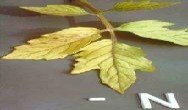 Under N deficiency, older leaves gradually change from green to paler green. As the deficiency progresses these older leaves become uniformly yellow.
Azoss Caps
Phosphorus
Under N deficiency, older leaves gradually change from green to paler green. As the deficiency progresses these older leaves become uniformly yellow.
Azoss Caps
Phosphorus
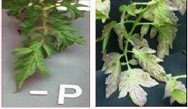 The symptoms first develop on older leaves showing some necrotic spots, and plants are dwarfed or stunted. Purpling of the stem, petiole, and undersides of the leaves.
PSB Plus Caps
Potassium
The symptoms first develop on older leaves showing some necrotic spots, and plants are dwarfed or stunted. Purpling of the stem, petiole, and undersides of the leaves.
PSB Plus Caps
Potassium
 Some of the young leaves show marginal necrosis (tip burn), and at a more advanced deficiency status show inter-veinal necrosis.
Potash Grow Caps
Sulfur
Some of the young leaves show marginal necrosis (tip burn), and at a more advanced deficiency status show inter-veinal necrosis.
Potash Grow Caps
Sulfur
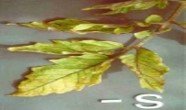 Leaves show general overall chlorosis. The veins and petioles show a very distinct reddish color.
Sulphur Caps
Manganese
Leaves show general overall chlorosis. The veins and petioles show a very distinct reddish color.
Sulphur Caps
Manganese
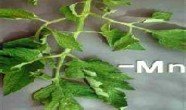 The leaves show light interveinal chlorosis developed under a limited supply of Mn.
Alp
Molybdenum
The leaves show light interveinal chlorosis developed under a limited supply of Mn.
Alp
Molybdenum
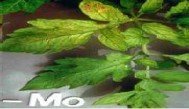 An early symptom is general overall chlorosis, similar to the symptom of N deficiency.
Alp
Zinc
An early symptom is general overall chlorosis, similar to the symptom of N deficiency.
Alp
Zinc
 In the early stage, the younger leaves become yellow and pitting develops in the interveinal upper surfaces of the mature leaves.
Zinc Grow Caps
Boron
In the early stage, the younger leaves become yellow and pitting develops in the interveinal upper surfaces of the mature leaves.
Zinc Grow Caps
Boron
 These boron-deficient leaves show a light general chlorosis.
Alp
Copper
These boron-deficient leaves show a light general chlorosis.
Alp
Copper
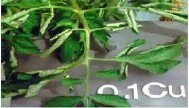 The leaves are curled, and their petioles bend downward.
Alp
Iron
The leaves are curled, and their petioles bend downward.
Alp
Iron
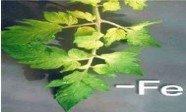 The iron-deficient leaves show strong chlorosis at the base of the leaves with some green netting.
Alp
The iron-deficient leaves show strong chlorosis at the base of the leaves with some green netting.
Alp
KEY FARMING POINTS
KEY FARMING POINTS
SOIL TYPE = Well-drained, sandy, or red loam soils rich in organic matter with a pH range of 6.0-7.0 are considered ideal.SOIL PH = 2 to 6.8CLIMATE / TEMPERATURE = Tomato is a warm season crop. Best quality fruit is obtained at a temperature range of 21˚ to 24˚C.SEASON OF PLANTING = The best time to plant tomatoes in Southeast Asia depends on your location's climate. Aim for the cool dry season (November to March) for ideal temperatures, humidity, and reduced disease risk. You can also plant during the warm dry season (April-May or June-July) but choose heat-tolerant varieties and provide extra protection from the sun.SPACING = 5ft x 1ftMANURING & FERTILIZATION = Fertilizer requirements depend on the fertility or quality of the soil.WATER MANAGEMENT = Depends on the farmer’s practice.HARVESTING DURATION = Depends on the variety, on average harvesting starts in 55 - 60 days.YIELD = 30 – 40 tons (Depends on the variety).
NOTE:
Recommended dosage on this crop schedule can vary depending on soil health, environmental conditions, and pest attacks.Add available forms of Phosphorus and Potash depending on the crop and crop varieties before every transplantation.Add available forms of calcium and magnesium as per the requirement.1-acre POORNIMA KIT contains: -NPK caps = 2 capsZinc caps = 1 capCropforce Nano Powder = 120gmHumigrow Nano Powder = 120 gmMycorrhiza nano powder = 100 gm
PRECAUTIONS: -
Biofertilizer is not a chemical fertilizer hence do not mix with agrochemicals.Do not be exposed to direct sunlight or heat.Use Bio-fertilizer before or after 3-4 days of use of chemical fertilizer.Please, clean the sprayer before the use of Bio-fertilizer or bio-pesticide.

